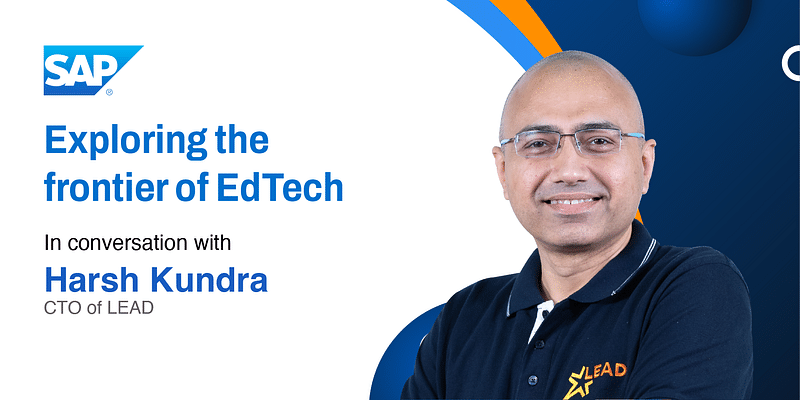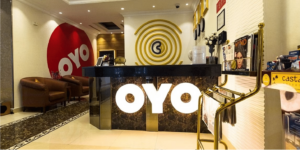
In the realm of edtech, where technology is redefining the future of education, we had the privilege to sit down with Harsh Kundra, the Chief Technology Officer (CTO) at LEAD, a leading player in the sector.
With a robust background in technology and a forward-thinking approach, Kundra is at the forefront of steering LEAD towards innovation and excellence.
In this exclusive interview, we delve into his role at LEAD, exploring how technology has been a transformative force, especially for B2B edtech startups.
Edited excerpts from the interview:
YourStory: Can you tell us a bit about your role as CTO at LEAD and your journey in the tech industry so far?
Harsh Kundra: I have spent two decades in the tech industry. Initially, was in the United States for five to six years. Since returning to India, I have mostly worked in the ecommerce and edtech sectors.
My edtech journey started in 2008 as a founding team member of Meritnation. Heading product and technology, I played a pivotal role in scaling Meritnation. Fast forward to 2020, I embraced a new challenge, joining Lead School.
India’s edtech landscape in India is predominantly focused on after-school education. They have courses for students to look into after they come home from school. However, at LEAD we want to make school education better. So, we are focused on making primary education more engaging.
LEAD has come a long way. From approximately 300 schools to an impressive tenfold growth, we have created a substantial impact on school partnerships.
YS: In your experience, how has technology transformed the landscape for B2B edtech startups? Can you share some examples of how Lead School leverages technology to optimise operations and enhance the student experience?
HK: There aren’t too many companies when it comes to the B2B edtech sector and investment in technology has also been significantly lower.
We are looking at making classrooms more interactive and rich in multimedia experiences so we can gather feedback from students to understand what is working best for them.
At LEAD, our sales and servicing teams are working very closely with schools to understand how they can better adopt our systems. This allows us to analyse gaps and helps us build products and systems through which we can make learning more efficient. Our teams are working very hard to analyse inputs in our data lakes and data warehouses and coming up with efficient solutions.
So, investing in technology is a continuous process for us.
YS: What are some of the cutting-edge technologies that you find most promising for the education sector? How is LEAD integrating these technologies to improve learning outcomes?
HK: We do a lot of work on the data side. The process involves looking at the overall journey of a student within the class. From student knowledge graphs to overall class knowledge graphs, looking at all the information helps us resolve these issues efficiently.
Data warehouses, data lake houses, reporting analytics…all are crucial at LEAD. We have also started to leverage AI as we believe it to have a huge impact on the sector. We have made significant investments in AI technologies and I see this as being transformative over the next couple of years.
YS: In the current startup ecosystem where the bottom line is everything, how have you managed innovation and ideas vs required optimisation results? Would you be able to share some instances?
HK: In the last one year, the startup ecosystem has carefully moulded, going from a focus on growth to a focus on profitability. We are treading a similar path at LEAD.
When the focus is on profitability, you have to maintain a balance between being innovative and chasing the organisation’s overall objective. To be able to do that, we have separate teams for driving innovation. The key is to have different teams for different objectives.
YS: How do you leverage data to benefit your organisation? Can you share examples of how data-driven insights have improved outcomes for you?
HK: When teachers teach in our classrooms, they have a tab with a day plan to guide them. From concepts to be taught to how students are responding, everything is recorded.
So, If there is an assessment and if we detect that a certain percentage of students have not understood, we don’t look at it just at a question level, but at an outcome and learning indicator level. If we see that a certain percentage of students have not been able to answer a learning outcome question. then we say that this content needs to be remediated.
All of these interventions are based upon having extremely detailed cuts of data, with us, which we have been able to process. We record extremely detailed metrics from our teacher app, and from television apps and then obviously, we have complementary student apps.
YS: You have recently acquired Pearson India business. What were the challenges in the transition phase? How did you overcome them?
HK: We have acquired the K12 Pearson business, which works across approximately 6,000 schools in India.
We had to migrate a lot of their existing systems as part of the transition. Some of the systems were still part of the overall Pearson global.
So, a lot of systems had to be kind of rebuilt in an extremely short span of time. Pearson had a large number of multimedia resources and digital assets, which we had to transition to LEAD. Ensuring that all of that content was safe and secure in LEAD servers was a big task.
We also decided to collaborate with enterprise tech companies like SAP. We rebuilt at least five to seven systems to align Pearson’s systems with our objectives.
YS: The typical mindset equates enterprise tech companies with traditional businesses. By collaborating with enterprise tech companies how are you orchestrating value and defying this? Any examples?
HK: As companies scale, they understand the need for mature systems with proven service models. We also have to understand that these enterprise systems are heavy duties and come at a certain cost. That is where the hesitation lies.
It’s prudent to make the right investments in technology and have the right kind of enterprise systems.
YS: What advice would you give to others looking to leverage enterprise technology effectively in the edtech space?
HK: Start investing in aspects important for your business in the long term. Let’s say, in leveraging services from enterprise tech companies, which will help you build mature systems. Also, along with the focus on innovation, one has to keep in mind the profitability aspect.










